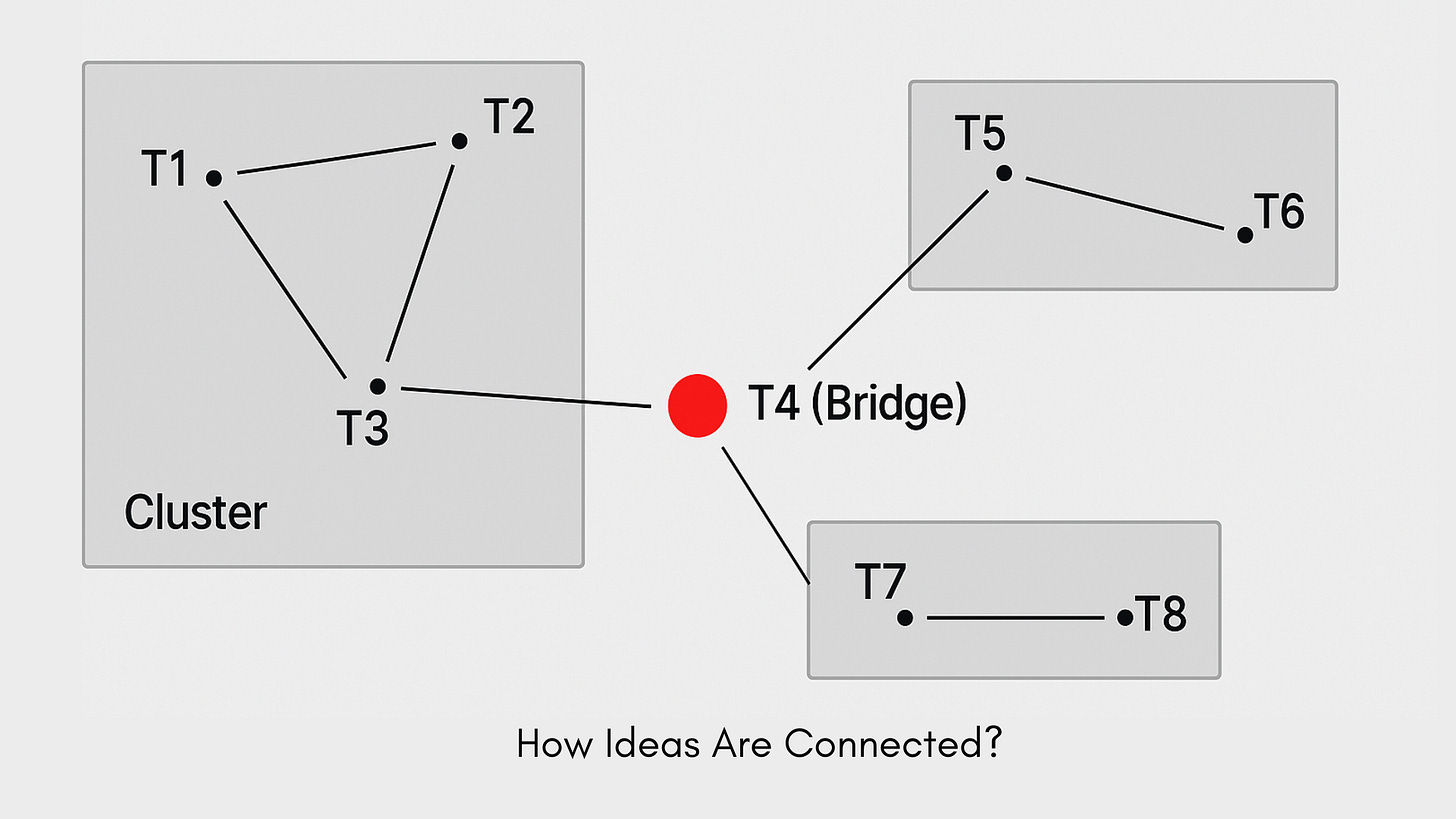Each week, I'll bring you the most relevant and insightful tech stories, saving you time and keeping you informed.
Do you ever feel like you're constantly taking notes – in meetings, from articles, during brainstorming sessions – but they end up in a digital drawer, never to be seen again? You're not alone.
Many of us diligently capture information, but we miss the real magic: using notes to connect ideas and spark inspiration.
We often focus on the act of writing things down, filling notebooks (physical or digital) with facts, tasks, and observations.
But as your collection grows, does it feel more like an archive than an active tool for thinking?
Why Are You Writing Things Down?
To Remember & Learn: Capturing key facts, summaries, or steps you need later.
To Spark Creativity: Jotting down fleeting ideas, observations, or questions that could lead to something new.
To Think Clearly: Dumping thoughts from your head to declutter your mind and organize complex ideas (like talking through philosophy with AI, as mentioned in the reference).
To Reflect & Grow: Journaling about your day, your feelings, or your progress (even a single sentence counts!). The act itself can help you notice patterns.
To Organize & Plan: Keeping track of practical things like gift ideas, project steps, or useful links.
To Connect Ideas: This is where the real magic happens – seeing how different pieces of information relate to each other.
Sometimes, the simple act of writing is enough.
It helps solidify thoughts or clear mental space, even if you never look back at that specific note. But often, the real value emerges when your purpose guides you to revisit and connect.
From Notes to Insights: Connecting the Dots
Once you know why you're taking notes, you can start using them more effectively to bridge concepts and generate inspiration.
From: Ohsawa, Y., Benson, N. E., & Yachida, M. (1998). KeyGraph: Automatic indexing by co-occurrence graph based on building construction metaphor. International Forum on Research and Technology Advances in Digital Libraries (ADL), 12-18). IEEE.
This is how thoughs link together according to the research. First you have cluster of ideas.
Then at sometime, they get connected by finding a connecting dot. The insghts come from clusters of ideas.
The 4 foundamentals of taking notes:
Taking notes when you have ideas
Linking ideas by clustering them
Tags are using for searchability and easy to find your ideas
Folder to group and categorize your notes into different types. E.g. your personal life route, and work related ideas might be different types.
New Products…
Both new launches aim to solve a similar marketers problems, large scale content generation is a huge pain.
Canva Visual Suite 2.0
Canva Streamlines Everything Visual
Canva rolled out its Visual Suite 2.0, designed to be a one-stop shop. Now you can create presentations, videos, whiteboards, websites, and more, all within a single design file – no more bouncing between different tools.
They also introduced features to help automate content creation:
Canva Sheets & Magic Studio: Need 50 variations of a social post with different text or images? Connect spreadsheet data using Canva Sheets to automatically generate multiple design versions at scale.
Canva Code: An interesting new tool allowing you to build interactive elements for your designs without needing any coding skills.
The goal is clear: streamline visual creation and make complex things simple.
HeyGen + HubSpot = Personalized Video at Scale
Creating personalized videos for hundreds of contacts seems daunting, right? The HeyGen x HubSpot integration makes it achievable.
This tool lets you automatically generate videos using AI avatars, pulling information directly from your HubSpot contact records.
Think personalized welcome messages, product explainers, or outreach videos using the contact's name, company, or other details you already have. Embed these videos directly into your HubSpot emails and workflows to seriously boost engagement.








